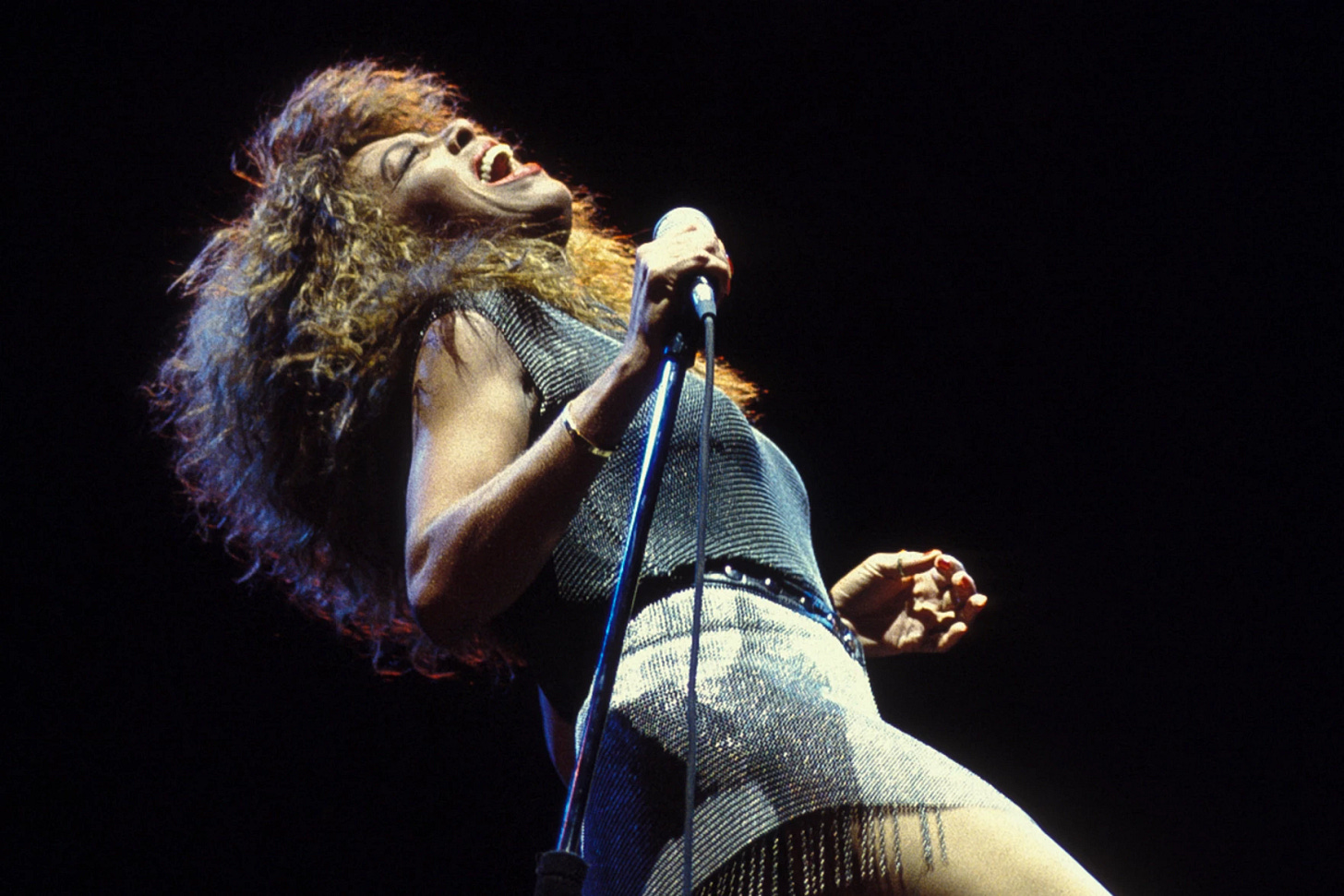I still remember the first time I really SAW Tina Turner. After getting home from school one Wednesday in April 1999, I popped in the VHS my parents made of the previous night’s VH1 Divas Live ‘99. A limo pulls up to the curb, stops, and the door opens. Out pour these legs, only halted by a black minidress and black heels. Away they go, as the camera pulls back and they enter a building, on a red carpet, naturally. After a little skip in her step, Tina Turner and her iconic blonde mop come into view as she struts her way through the Beacon Theatre’s lobby, down the aisle, and onto the stage. She was, as she sang, “simply the best.”
One of the things I admire about Tina was her ability to walk away. When she decided she was done with entertainment, she was done. She staged her farewell tour in 2008 and 2009 in the midst of semi-retirement, and that was it. Unlike her friend and peer Cher (one of the few women who can reasonably be considered a peer to Tina Turner), Tina’s farewell tour was standard length. As she told the New York Times in 2019 in the midst of her retirement, “I don’t sing. I don’t dance. I don’t dress up.” She rarely resurfaced thereafter. Hell, when she was finally inducted into the Rock N’ Roll Hall of Fame as a solo artist in 2021 (though she was eligible as a solo artist in 1989 and yes, it took that long), she sent a video. She stuck to her word, and she more than earned it after the life she lived.
Understand that Tina Turner, (Anna Mae Bullock, originally), went from picking cotton in the Jim Crowe south to becoming one of the most significant entertainers, ever. Her influence spiderwebs from some of the world's biggest white rockstars (David Bowie, The Rolling Stones- lest we forget, she is the blueprint for Jagger’s moves) to today’s most significant Black performer (that’s Beyoncé, and no, that’s not an opinion).
I will fully admit that I still have a lot of work to do on Tina Turner’s discography. I had “What’s Love Got To Do With It” and “The Best” on repeat from the age of 9, but I only got into Private Dancer a decade later in college. Beyond that, I haven’t dug deep. I’ve been regretting that even more over the last two weeks as I finally, reflexively, engulf myself in her catalog. I also continue to regret that I never saw her live. I was 18 the last time she played near me, but I wish I had the awareness and sense to get a ticket and go. Ever since her retirement, I’ve always regretted it. I always will.
Despite not releasing music for over a decade before her death, Tina remained a mainstay in pop culture. In 2020, Kygo issued a Tina-approved reworking of “What’s Love Got To Do With It,” on the heels of his massively successful reworking of Whitney Houston’s cover of “Higher Love.” While it didn’t soar the way “Higher Love” did, I loved it from the first listen, which aptly took place while making my way home from Fire Island in the summer of 2020.
Over the last few years, I’ve discovered an underbelly of Tina Turner remixes that have largely avoided entering the digital era (as is the case with many artists’ remix catalogs). I hope that one day I get to dance to Tina’s club mixes in a club. Remixes of “Goldeneye” (which is streaming as of 2022), “Whatever You Want,” and “Disco Inferno” fuel my workouts and my day-to-day life.
Tina also has a handful of albums that have yet to enter the digital age. Her first five albums of material remain unissued on digital. Her first, Tina Turns The Country On, has never even been reissued. Hopefully they will enter the digital realm in remastered form soon. Until then, there are five studio albums readily available on all formats, waiting to be explored, digested, and appreciated.
A few other songs that I’ll recommend off the bat are her fantastic covers of “I Can’t Stand The Rain” and “Let’s Stay Together.” Then there’s other fantastic originals like “When The Heartache Is Over” and “We Don’t Need Another Hero.” As I’ve listened through the albums that are available on streaming over the last 2 weeks, a few others have stuck out to me including “Missing You,” “Without You,” “Falling Like Rain.” Matter of fact, here’s my Tina playlist which includes everything I’ve been jamming to that’s available on streaming, including one of her final recordings, 2007’s gorgeous cover of Joni Mitchell’s “Edith and the Kingpin” with Herbie Hancock.
I’m going to leave you with one more Tina song, one of my favorites. You know it, but you probably haven’t heard Tina sing it. Santana’s “The Game Of Love” was the lead single for 2002’s Shaman, the follow up to 1999’s Grammy-dominating Supernatural. Michelle Branch is the song’s vocalist that we all know. She wasn’t the original vocalist though. Hell, she wasn’t even the second vocalist. Branch was actually the fourth to record the song. Macy Gray was third (her version remains unreleased). Tina was the first woman (New Radicals frontman Gregg Alexander was the first, but it was decided that a female vocalist would be more appealing). When Tina declined to participate in the music video, she was replaced. Tina Turner… was replaced. Sit with that for a moment. Thankfully, her version of the song was released on 2007’s Ultimate Santana. It’s nothing short of glorious. She brings such gravity and soulfulness to the lyrics. What a shame that it didn’t get the release it deserved. As Santana said himself, “no one can hit a note like Tina Turner.”
Long live the Queen of Rock & Roll.




